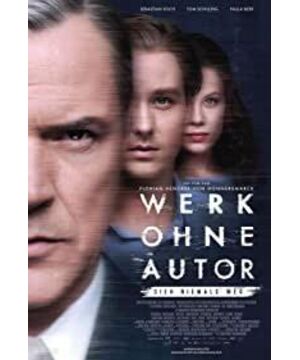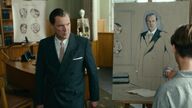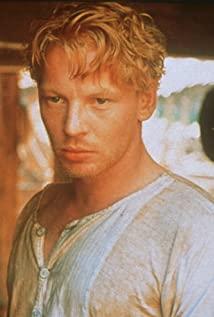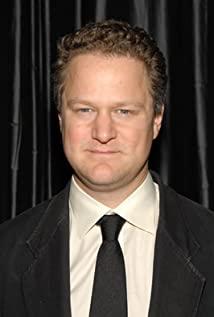"No Master" is very controversial. For example, the film prototype-Richter (the most famous modern artist still alive in Germany and the target of half of the modern Chinese artists) is dissatisfied with the film. The original saying is: "This film insults and distorts my experience."
It's commonplace for adapted biographies to be complained by prototypes, but the contradictions don't stop there. This film was also strongly resisted by some citizens in Germany, and the Berlin Film Festival in Germany also explicitly rejected the participation of "No Master".
reason? The background of the film is before and after World War II, but the director Donasma neither flogged totalitarian and utopian evils like traditional German historical films, nor did he examine the destruction of social structure by the German Democratic Republic, like the first film "Eavesdropping Storm", which caused a sensation in the industry. Sexual destruction.
But the director has his reasons: I just present the facts from another angle.
Indeed, not every inch of sin will be punished, and it is an inevitable reality that the truth is buried by history. One of the protagonists of the film, Dr. Sibande, the medical coordinator of the Nazi Health Bureau, was not tried for the cruel execution of the "eugenics" plan. His monstrous crime was finally drowned in the crowd, and he became a doctor in the new East German society. The role model, eventually successfully escaped from East Germany and mixed into the Western world to continue at ease. The reason for being able to continue to be at ease has been given by the KGB general temporarily stationed in East Germany: The Western world without our Bolshevik Party would not delve into the truth.
Europe feels slapped in the face, aren't you ironic that Europe is confused and good at forgetting? Not to mention, although the painter Kurt in the film never knew the truth of "Aunt died of Dr. Chipband", he experienced the painful life of his aunt being "purified", his father hanging, and his wife being sterilized by his father-in-law. , Can live his own little life happily, this is simply a shame to the German youth. In fact, young people like Kurt, who were born in the Nazis and grew up in East Germany, are the worst generation in Germany. The era should have the heaviest imprint on them, but these are almost invisible to the actor Kurt. Ert became an outsider of history, looking so numb.
It's no wonder that the Berlin Film Festival has turned its face off. The politics is too incorrect. When you touched on the German theme of World War II, you still want to talk about politics, there is no way.
But this is exactly what the director wants. There is no subjectivity, no authorship, no judgment, no reflection on the catastrophe, and no promotion of any values. Both the movie itself and the paintings in the movie are veritable "masterless works."
What is "a masterless work"? As the protagonist Kurt explained to his own paintings: "I don't express my views, I just present." To hide authorship, deconstruct one's position, and naturally present a certain nature of the world is the ultimate goal of modern art.
Just like at the end of the film, when the famous Kurt explained to the media the portraits of people in his work that are closely related to the pain of the times, he denied his relationship with those people and said indifferently that he did not know them. Many viewers who are waiting for the trial of "evil" and looking forward to an emotional climax must be at a loss when seeing this-what on earth do you want to say? As the former Nazi leader's father-in-law escaped, the protagonist didn't know the truth. Let's bear it, but the man in the protagonist's painting clearly suffered the Nazi atrocities, so how could he say that he didn't know him? Not to mention the Germans, all those who are used to mainstream World War II movies will inevitably want to scold their mothers. Your photos are obviously historical subjects, and there is no standpoint, so what is going on.
Is this an escape from history and reality? maybe.
In the film, the young Kurt has become accustomed to letting the horror scenes of the Nazi era be blurred before his eyes to avoid pain, just like the "fuzzy painting" invented by him as an adult, in the paintings, whether it is his wife, All of them were Nazi officers, and they all became vague images with no clear meaning. Even the little aunt who died tragically that year was still not treated specially in his paintings, and blended with the image of Nazi officers. Whether it is Kurt's work in the film or the film itself, the pain, trial, anger, sacrifice, and morality are all absent.
Is this really good? Perhaps the question should be changed to, why does the director want to do this?
The film has already pointed out that in post-war Europe, artists' fear of ideology reached its culmination, especially in Germany, where the two major ideologies of National Socialism and National Socialism have been swept through, and the artists have become depressed. There is essentially no difference between the Nazi elites who force you to paint masculine and those who are forced to paint workers and peasants who are suffering, and then enter the tiger’s mouth. There is no place for free art. Kurt decided to escape from all this, but art can Are there real freedoms in the democratic world outside the Berlin Wall? The director told us in "A Masterless Work" that we can't.
In the intriguing part of the film at the end, when the West German media reporters introduced the painting, they avoided a naked woman and a German military officer one after another, and chose one that would never cause controversy in ideology. The photographer was at ease when he was standing next to the painting "Mother and Son". The director said very clearly, whether it is East Germany or West Germany, no matter what era or society, we will be manipulated by ideology, and even subconsciously self-censored.
Even now, even if it is as free as the United States, art cannot escape ideological censorship. The breasts are painted for fear of being removed from the shelves by feminists' protests; it is painted black and worried about being called racial discrimination. Sometimes, the charges imposed on you will exceed your imagination.
So in the film, the professor of the Düsseldorf Academy of Fine Arts tells students in class: Who do you choose between the two political parties?
Don't choose, choose art. He explained modern art very well, not to have political opinions, even to criticize the Nazis, even to praise conscience.
This is exactly what the director Donasma said. Pure art is not responsible for universal values. It is only responsible for constructing pure forms and searching for truth.
It sounds like a mystery, especially the phrase "searching for the truth", which makes many people stay away from modern art.
And the wonderfulness and value of this film lies in the fact that it uses stories to clarify modern art.
In the story, when Kurt spoke in a class, he unconsciously said the essence of modern art: If I say 6 numbers at random now, you will feel stupid and meaningless, but if these 6 numbers happen to be the lottery winning The number becomes meaningful, it has unity, value, and even beauty.
What does that mean? The film was revealed at the climax. Kurt happened to see the news in the newspaper that East Germany had captured the leader of the Reich Working Group. This official was the boss of Kurt’s father-in-law "Doctor Chibande", and the death of his little aunt and the two There is a direct relationship. But Kurt, who has never understood the truth, followed his inner intuition and unconsciously put these familiar figures in his black and white paintings.
By chance, Kurt’s father-in-law, Dr. Zibande, walked into the studio and saw in the painting that he and the Nazi boss, Aunt Kurt, and Kurt himself appeared in the same picture at the same time. The criminal and the victim were connected. At the same time, the truth that no one knew completely stood there. He was shocked and fled, who had always been cold and tough. The seemingly random and meaningless portraits in the studio make the invisible connection of everything in the world visible, and the buried truth emerges with a series of random paintings. Although this truth is the unconscious creation of the artist, its power is enough to deter "evil" and scare it.
Although at the end of the film, Kurt still doesn't know the truth, never takes revenge, and Dr. Zibande has not received a substantive trial, but in the face of "absolutely true" art, all sins will tremble. This is not a higher level. Trial.
"No Owner" is not without attitude. To put it bluntly, the director just doesn't want to use a certain ideology or government forces to shoot a bad guy, but wants to use the hand of God to use art to judge sin, such an unconscious pure art , Is the "absolute reality" and "pure beauty" in the words of Aunt Kurt at the beginning of the movie, which can illuminate the darkness.
To put it simply in Chinese, it means that it has its own arrangements, which is the director's "Tao".
At this point, the film's tour of modern art is over. The director didn't even want to contribute to the construction of international universal values, nor was he interested in such things as digging into the gloom of human nature, promoting ideology, or discussing certain values. The theme of this film is art. The director tells how the times affect art, but his story is based on the sensitive modern German history, which creates a misplaced expectation for the audience.
It is easy for us to expect serious criticism of human atrocities in the grand historical background, but these movie-watching expectations all fell through in this movie. People want to see the melody that dances between evil and good as in the famous work "Eavesdropping Storm", even if it is a beautiful imagination of human nature (you can hardly believe that a Stasi intelligence veteran will be infected by the artist from evil to good) .
In fact, from the beginning of "Eavesdropping Storm", Donasma only used the background of East German Stasi as a shell. On the surface, it is a story of good and evil, but the real theme is still art. The director was not interested in routine melodrama at the time. The anti-climactic treatment at the end of "Eavesdropping Storm" first showed signs: the playwright deliberately did not recognize the secret police who had saved him, did not hug or cry, but wrote gratitude as I read the book and waited for the secret police to get it in the bookstore. After getting the book, the police did not cry, but said: This is for me. In the final freeze-frame shot, the smile on the secret police's face and the smile of the painter at the end of "No Master" have a profound meaning in the same way. Art is through the intersection of them and history. The former is the influence of art on history, and the latter is the influence of history on art.
But this time the director has thrown away his former glory, he has no scruples about taking pictures of what he is interested in, and the textual level is relatively complete, and he likes this expression very much.
At the end of the day, I still had to pour cold water. Although "No Master" clearly explained the logic of modern art, it was still far-fetched. How many modern art can find the truth of the world based on intuition? Or the "absolute truth and beauty"? This is more like saying: modern art is about being blinded. If you are lucky, you can cover the truth and beauty. If you are not lucky, you can only create garbage. It is difficult for us to recognize the artistic creation of this kind of luck.
No wonder the film prototype artist Richter is so angry, he said that his art has a strict theoretical basis. From this point of view, "A Masterless Work" clearly clarifies modern art, but it may also belittle modern art.
But if you really understand modern art through movies, no one may have seen it. Just like modern art works today, it takes thousands of words to explain the expression of the work clearly. Then what is the use of the work? Modern art that emphasizes form but not content has lost its practical significance while keeping away from the audience.
Modern art and theoretical inquiry does have its academic value, and the influence is slowly permeating and far-reaching. But after so many years, the literature, paintings, and movies that really remain are still inseparable from stories and characters. These are the arts that truly affect our spirit and life. From this perspective, the so-called "masterless work" is more like a self-entertainment.
THE END
View more about Never Look Away reviews











